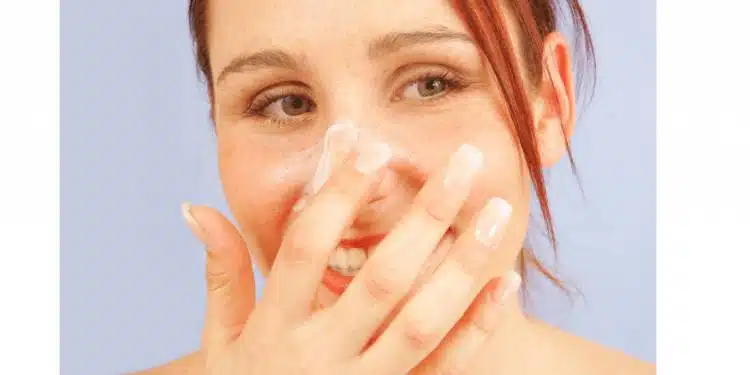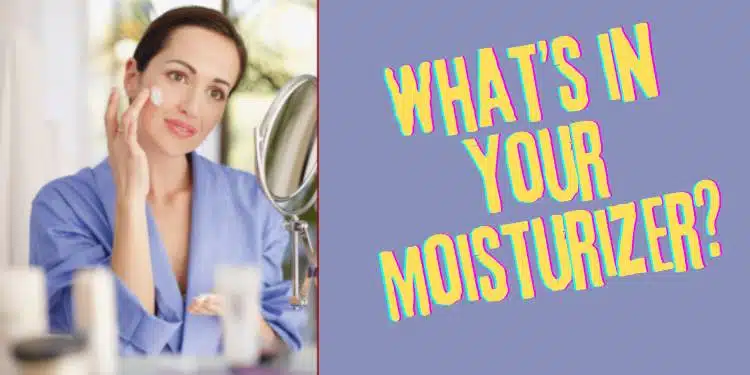by Fayne Frey, Board Certified Dermatologist
As I do every morning, I woke up today at 6:00 a.m., put on my running shoes, and raced out the door to meet my friends at a local state park. We run unplugged, devoid of cell phones or any electrical device other than our Garmin watches, and so we fill this daily gift of time with interesting conversation.
This morning, we had an enlightening chat about moisturizers and why selecting one is daunting to many. It seems no one really knows what they are buying when purchasing a moisturizer. Whether sold in a jar, tube, bottle, or pump, a moisturizer is truly a blind item.
Do You Know the Ingredients in the Products You Buy?
Here’s how the conversation started. During the first mile, Debi, a tall and compassionate fashionista, asked me about serums. She wanted to know if they were truly “anti-wrinkle” and if they really moisturize. Kelly, an inquisitive gal from an insular religious community and the fastest runner amongst us, slowed down to stay beside us as the conversation progressed. Carol, an athletic trainer and fabulous cook, and Katie, a consummate athlete and true naturalist, ran alongside the rest of us. All wanted answers. As I thought about Debi’s question regarding serums, it dawned on me that like almost every consumer, none of these accomplished and intelligent ladies had a clue about the ingredients in serums or moisturizers.
To make a point, in response to the question, I asked the group another question, “What’s the first ingredient in your favorite bottle of ketchup?”
Without hesitation, Debi answered, “tomatoes”.
“Exactly,” I said. We all know most ketchup is made from some sort of tomato-based product.
“What is another common ingredient found in ketchup?”, I continued.
One of the ladies answered, “vinegar”.
“Correct again,” I responded. Vinegar, also known as acetic acid, is usually an ingredient in the ketchup we buy.
I persisted, “Other ingredients found on a ketchup bottle ingredient listing?”
Carol answered, “High-fructose corn syrup,”. Another correct answer. Many common ketchup brands include this corn starch-derived sweetener.
As we completed our second mile, we discussed other ingredients in ketchup, including salt and spice. My point? Everyone knows exactly what’s in that big red squeezable condiment bottle.
Next, I brought up the subject of mayonnaise and asked the same question, “What ingredients are in your favorite brand of mayonnaise?”
Katie, the chicken coop-owning, egg-supplying runner amongst us, rattled off without any doubt, “eggs, oil, vinegar, salt….” Everyone agreed, they all knew the ingredients found in mayonnaise.
But Do You Know What’s in Your Moisturizer?
My next question was, “What’s the first ingredient in your favorite moisturizer?”
Except for the sound of our feet hitting the ground, there was complete silence. Nobody offered an ingredient. After a few seconds passed, I broke the quiet.
“Water – the overwhelming majority of facial and body moisturizers is water! As a matter of fact, manufacturers formulate the majority of moisturizers with almost 70 – 80% water.”
“Ok, so what about the second ingredient?”, I continued.
Again, total silence. There was no mention of glycerin, dimethicone, petrolatum, phenoxyethanol, cetearyl alcohol, capric/caprylic or triglycerides. Unless the consumer is well-educated in chemistry or cosmetic science, or perhaps is a chemical engineer, the average consumer has no clue as to what’s in their moisturizer. Even the brightest end-users, like the women in my running group, don’t know.

Decoding the Moisturizer Label
So how do you select a moisturizer? Since most consumers don’t know what’s in a moisturizer or serum dispenser, they rely on what a friend said, which may or may not be accurate, or the claims on the front label of the product, known as the principal display panel. Enter marketing –
In true transparency, fair packaging and labeling laws require the front label to declare the name of the product and the amount provided in the container. After that, almost anything goes. And as long as the claims on a cosmetic moisturizer intend to beautify, adorn or improve the look of the skin, even if the effects are temporary, it’s fair game. By law, cosmetic claims cannot intend to change the structure or function of skin. This includes eliminating wrinkles, treating or preventing disease, or manufacturers would be in violation of the law.
Marketing Jargon for Moisturizers
Marketing jargon is confusing. You might see this phrase on a moisturizer, “decreases the appearance of fine lines”, but you won’t see this one, “rids the skin of wrinkles or fine lines”. The first phrase is legally compliant language for a cosmetic, the second is not. Truthfully, in all my years of practicing as a dermatologist, I’ve never seen a moisturizer rid anyone’s face of a wrinkle or a facial fold.
However, I do recommend you moisturize frequently, just not for anti-aging purposes. A well-formulated moisturizer can prevent water from evaporating from the skin, thereby increasing the water content of the skin surface. And yes, this is beneficial to both skin health and appearance. So, I encourage you to apply moisturizers, especially in the winter when the air is cold and dry. But be aware, this change is temporary at best.
How to Select a Moisturizer?
So, what’s a consumer to do? Exactly how should my running friends select a moisturizer?
Here the advice I gave my friends as we finished our run:
Select products from national and internationally known brands that hire cosmetic chemists, biologists, environmentalists and other professionals to assure the product is safe. These reputable companies have the resources to purchase quality raw materials, the resources to test product safety and efficacy, to make sure these moisturizers truly increase the water content of the skin. They have the resources to produce affordable moisturizers where you get the most bang for your buck.
In addition, moisturizers from these reputable manufacturers are readily available, found in beauty shops, pharmacies and on grocery store skincare aisles throughout the country. Perhaps the best reason to purchase your moisturizer from them is that they have a reputation to uphold and the most to lose if one of their products is deemed unsafe.
About the Author: Fayne Frey, M.D.

Dr. Fayne Frey is a board-certified clinical and surgical dermatologist practicing in West Nyack, New York. She specializes in the diagnosis and treatment of skin cancer and is a nationally recognized expert in the effectiveness and formulation of over-the-counter skincare products. As a speaker, Dr. Frey captivates audiences with her wry observations regarding the skincare industry. She consulted for numerous media outlets, including NBC, USA Today, and, the Huffington Post, and shared her expertise on both cable and major TV outlets. Dr. Frey is the Founder of FryFace.com, an educational skincare information and product selection service website that simplifies the overwhelming choice of effective, safe and affordable products available. Dr. Frey is a fellow of both the American Academy of Dermatology and the American Society for Dermatologic Surgery.
FAQs About Moisturizers
Here are some commonly asked questions about moisturizers.
Why is moisturizing important for the skin?
Moisturizing is essential because it helps lock in the skin’s natural moisture, prevents water loss, and keeps the skin hydrated. It can also improve the skin’s texture and appearance.
When should I use a moisturizer?
You should use a moisturizer twice a day, ideally after cleansing your face in the morning and before bedtime. You can also apply it after showering or washing your hands.
Can I use the same moisturizer for day and night?
Yes, you can use the same moisturizer for both day and night. However, some people prefer a lighter formula with sunscreen for daytime use and a thicker, more nourishing one for nighttime.
Should I moisturize if I have oily skin?
Yes, even oily skin needs hydration. Using an oil-free, non-comedogenic moisturizer can help balance your skin and prevent it from producing excess oil.
Are there any ingredients I should avoid in moisturizers?
Avoid moisturizers with ingredients that may irritate your skin, such as alcohol, fragrances, and harsh chemicals. If you have allergies or sensitivities, be cautious and consider hypoallergenic options.
Can I use a moisturizer with other skincare products?
Yes, you can use moisturizer in conjunction with other skincare products, such as serums or sunscreen. Apply it as the final step in your skincare routine.
How long does a moisturizer last once opened?
The shelf life of a moisturizer can vary, but most have a shelf life of 6-12 months after opening. Check the packaging for the specific period and discard if it has changed in color, texture, or smell.











Great advice as always! Your book is packed with lots of interesting information. I highly recommend to anyone with skin!!
Thank you! I agree that Dr. Frey’s skincare advice is extremely important, helpful and accurate!